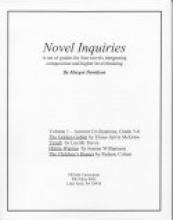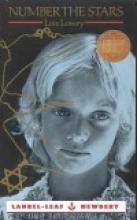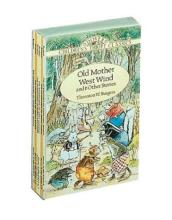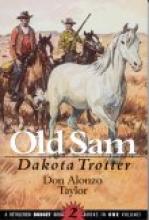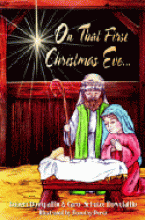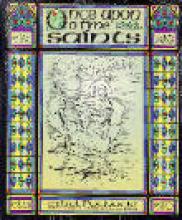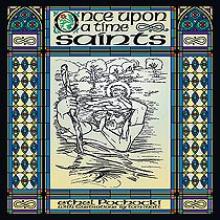No name
Novel Inquiries, Volume 1: Ancient Civilizations, Grades 5-6
This set of study guides for grades 5-6, written by a Catholic homeschool mother of five, provides a literary guide with in-depth study questions, writing assignments and analyses for four historical novels on Ancient Civilizations: The Golden Goblet by Eloise Jarvis McGraw, Tirzah by Lucille Travis, Hittite Warrior by Joanne Williamson and The Children's Homer by Padraic Colum.
This guide and future editions that are in the works are designed to provide a literary and writing component to the upcoming Catholic History program Connecting with History: a Guide to Salvation History, Bible History and Ancient Cultures by Sonya Romens and Andrea Chen (see http://www.rchistory.com for details). Novel Inquiries, however, does not rely upon Connecting with History and could certainly be used independently as well.
Mrs. Davidson, an experienced literature teacher and an alumna of Thomas Aquinas College, provides individual guides for teachers and for students in one volume.
First, the introduction offers helpful and practical advice on ways to use a novel in education, helping students learn to extract themes and meanings from the story, handling the study of vocabulary and "getting through the novel". The teacher section itself offers an in-depth story synopsis which highlights important themes from each novel. A "Directing Student Activities" segment offers tips on helping the student get the most out of the novel, explanations of how the novel fits into the Connecting with History program, basic instructions for getting through the various student components of the guides and ideas for post-reading research and activities. A final page offers ways to reflect on all of the books together after having completed the entire study (which is intended as a year-long undertaking). Having read two of the titles (The Golden Goblet and Hittite Warrior) before reading through these study guides, I'd like to say that I'm impressed with the depth and scope of what Mrs. Davidson is able to draw out of each of these stories. Her synopsis and comments brought out excellent points and themes that I had not recognized when I read the novels myself.
The student portion (all but 28 pages of the book) offers guides that vary slightly in focus from story to story both to suit the nature and difficulty of each book and to offer some variety to the course.
The Golden Goblet study guide begins with some short but helpful assignments to complete before starting to read the story (in recognition of the Ignatian/Classical method of prelection - a sort of previewing of the material before beginning). Some tips for "while reading the story" offer ideas for things to think about while reading the story and suggestions of things to jot down in a reading log as the story progresses. The vocabulary section for this novel is rather extensive (four to eight words for each of the sixteen chapters) and covers words such as "ingratiatingly", "menial", and "citadel". Several thoughtful "questions for reflection" for each chapter invite students to think carefully about and draw conclusions relating to the story and predict what will happen next as well as simply relating portions of the storyline. Five "questions for the end of the story" invite students to reconsider some of their conclusions drawn while reading the story and reflect on overall points and themes of the story. The final section offers three in-depth writing assignments complete with pre-writing assignments and tips for revising and editing each segment. These assignments are both interesting and creative and help students to develop good writing techniques and study habits as well as get more out of the story.
The study guide for Tirzah is a little simpler because the writing style is easier (there are no vocabulary lists for this book). The guide provides "Before reading" and more in-depth Reading Log Instructions that cover larger segments of the book (up to six chapters at a time). These assignments give the students related Bible passages to read and provide other ways of reflecting upon and getting more out of the story. Seven questions for the end of the story help students consider general themes from the story (relating to forgiveness, obedience, prejudice, faithfulness, etc.). The four writing assignments (similar in nature to those assigned for the Golden Goblet), allow students to practice literary techniques, explore the main ideas of the story, consider the virtues possessed by important characters in the story and creative writing ideas.
The Hittite Warrior study guide is similar in nature to the one for the Golden Goblet, providing assignments for before and during reading, vocabulary lists, reflection and discussion questions for nearly every chapter, questions for the end of the chapter and five in-depth writing assignments relating to the story (this guide also offers an "exploring history" report-writing assignment).
The guide for The Children's Homer offers assignments for before and during reading, vocabulary lists, questions for reflection for the end of each section and questions for the end of the story. The writing segment covers the literary device of "flashback", explores characters and themes from the book and provides some creative and artistic extra activities relating to the story
The appendices offers several types of writing samples, charts for mapping theme essays, charts for character analysis and rather detailed teacher/parent guidance for evaluating student writing.
This very impressive guide provides a helpful way of incorporating history, literature, vocabulary and writing. It should also prove to be a wonderful resource for parents who are nervous about guiding their children through the complexities of good writing. Future titles in the works will offer ancient culture volumes for Grades 7-9 (covering the novels Mara Daughter of the Nile by Eloise Jarvis McGraw, Warrior Scarlet by Rosemary Sutcliff, Phaedo by Plato, and Caesar's Gallic Wars by Olivia Coolidge) and Grades 10-12 (Epic of Gilgamesh edited by John Gardner, Til We Have Faces by C.S. Lewis, Oedipus Rex by Sophocles and Julius Caesar by William Shakespeare).
Novel Inquiries, Volume 2: Ancient Civilizations, Grades 7-9
Volume 2 carries on the tradition of excellence described in the review of Volume 1, with many additional features for the middle grade student. The 43-page Teacher's Guide is separate from the 136-page Student Book at this level. This volume includes literature guides for Mara, Daughter of the Nile by Eloise Jarvis McGraw, Warrior Scarlet by Rosemary Sutcliffe, The Tale of Troy by Roger Lancelyn Green, and Caesar's Gallic Wars by Olivia Coolidge.
The Teacher's Guide addresses the goals of literature study in general as well as specific goals and needs for this age group. In addition, the author has written a story synopsis and theme as well as detailed assignment instructions for the teacher for each of the novels. The numerous suggested assignments range from journaling and outlining activities to graphic organizers to compositions to discussion exercises to art projects. However, my favorite part by far is the appendix! The description of the writing process and instructions for evaluating various types of student writing are invaluable when used with the student writing samples. It is one thing to read a list of details that should be a part of a student's writing, but it is much more helpful to actually read the student's work alongside the lists.
The Student Book is a comprehensive literature study guide tailored to the developmental needs of the 7th to 9th grade student for each of the four novels as well as a section to complete at the end of the study of all four novels. Each novel's guide includes a "Before Reading" set of activities, "While Reading" set of activities, "Questions for Discussion at the End of the Story", and "Writing Prompts for the End of the Story". Especially appropriate to the target age group are the numerous graphs employed to help the student organize a pertinent information. The student is taught to use "Mind Maps", graphic-based webs for character analysis, and charts and Venn diagrams. My 8th-grade student found the chart formats to be very helpful and enjoyable to use. Writing activities taught include character essays, theme essays, speeches and scripts, autobiographical and biographical narratives, poetry, and opinion papers. The student's appendix also contains many examples of student assignments to help guide a more inexperienced student to a successful writing project.
This series is a terrific contribution to the curriculum now available for Catholic homeschoolers and fulfills a genuine need for literary analysis guides. It is so refreshing to be able to simply pick up the book and get to the work of educating my children without worrying about hidden bias and doctrinal errors. Congratulations to the author!
Number the Stars
Nurture Shock
We chose these topics because the research surprised us - it directly challenged the conventional point of view on how kids grow up. However, once we parsed through the science and reviewed the evidence, the new thinking about children felt self-evident and logical, even obvious. It did not feel like we had to raise children "by the book." It felt entirely natural, a restoration of common sense. The old assumptions we once had seemed to be nothing but a projection of wishful thinking. Once we overcame the initial shock, we found ourselves plugged into children in a whole new way.NurtureShock includes a fairly dense conglomeration of scientific studies on different topics which the authors have gotten heavily involved in. I loved how often they had actually sat down and observed studies conducted by experts in various micro-fields of child behavior while still sharing interesting stories about how their new-found knowledge had impacted their own families. Lots of cool stuff! It's a book designed for the masses, so it's a relatively quick read, but weighty nonetheless. Incidentally, it never mentions homeschooling (and is completely secular in so far as it never mentions religion or spiritual dimensions - though good science will, naturally, have to take into account things like fallen human nature when studying human behavior), it may end up providing a morale boost to homeschool parents both because it provides pretty broad coverage of some of the things schools struggle with and because it highlights some of the things children need that are relatively easy and natural to provide at home. The thing that perhaps struck me most about the book was the utter honesty of the authors and scientists, who were sharing information even when it wasn't what they *wanted* it to be; they were incredibly up-front about their own biases. Among other things, this makes it a sort of incomplete - in a natural and healthy and refreshing way. There's lots of stuff to stew on, some of which is quite paradoxical, and it's certainly a book I plan on re-reading and look forward to discussing with others. Also, if you've read the New York Times' article on "How Not to Talk to Your Kids: The Inverse Power of Praise" (And if you haven't yet, you should!), you'll get a little taste, because this article (which debunks conventional thinking about "self-esteem") is written by one of the authors of NurtureShock and the subject matter of the article is part of what's covered in this book. Here's a list of basic topics covered in the book (each chapter stands on its own): 1. "The Inverse Power of Praise": Basically, the self-esteem movement was somewhat misguided in thinking that children would feel better about themselves and do better if we just told them they were smart. The truth is, children (and likely adults too!) work better with specific praise about things that they have some control over - like putting good effort into something. Some of this material is found in the New York Times article above. 2. "The Lost Hour": A collection of studies on why children, especially teenagers, need more sleep. The surprising thing is how big an impact this can have on their school performance. 3. "Why White Parents Don't Talk About Race": A very interesting discussion on the negatives of assuming that children will learn appropriate social behavior and attitudes simply from hanging around other children. In addition, we are strongly reminded that parents need to be open (and even brave) about talking to our children about important issues - especially if they are sensitive ones that might make us uncomfortable. 4. "Why Kids Lie": An exposition on current research on lying and some helpful hints for parents - including the vital importance of truly acting like we value honesty. The comparison on various morality tales and how they impact children's behavior was quite fascinating. 5. "The Search for Intelligent Life in Kindergarten": This chapter details serious flaws in the way (and especially the age) in which children are being admitted (and not admitted!) into gifted programs in both public and private schools. This chapter also provides some helpful background on the intellectual development of children. 6. "The Sibling Effect" (Delightfully subtitled: "Freud was wrong. Shakespeare was right. Why siblings really fight."): The basic point is that sibling fights are almost entirely not about struggling for more parental attention. You can read a little more about this chapter in this ABC News article on "The New Science of Siblings". 7. "The Science of Teen Rebellion": This has a lot about the nature of arguments, some of which I'm still processing, but here's an interesting quote - a conclusion regarding a particular study - to give you a sense of it (Hurray for balance!):
The type of parents who were lied to the least had rules and enforced them consistently, but they had found a way to be flexible that allowed the rule-setting process to still be respected.8. "Can Self-Control Be Taught?": Many interesting insights from a new preschool program/method that's showing great potential. 9. "Plays Well with Others": This covers a variety of parent and family issues that have an effect on how children behave. One of the most important overall themes is that as parents, it's not our job to protect our children from conflict, but to help them learn to deal with it - in large part by dealing with it reasonably ourselves. Discussions of "zero-tolerance" and the paradox of "socially savvy" children (both primarily focused on the school setting) were particularly valuable. Here's a telling paragraph:
We thought that aggressiveness was the reaction to peer rejection, so we have painstakingly attempted to eliminate peer rejection from the childhood experience. In its place is elaborately orchestrated peer interaction. We've created the play date phenomenon, while ladening older kids' schedules with after-school activities. We've segregated children by age - building separate playgrounds for the youngest children, and stratifying classes and teams. Unwittingly, we've put children into an echo chamber. Today's average middle schooler has a phenomenal 299 peer interactions a day. The average teen spends sixty hours a week surrounded by a peer group (and only sixteen hours a week surrounded by adults). This has created the perfect atmosphere for a different strain of aggression-virus to breed - one fed not by peer rejection, but fed by the need for peer status and social ranking. The more time peers spend together, the stronger this compulsion is to rank high, resulting in the hostility of one-upmanship. All those lessons about sharing and consideration can hardly compete. We wonder why it takes twenty years to teach a child how to conduct himself in polite society - overlooking the fact that we've essentially left our children to socialize themselves.10. "Why Hannah Talks and Alyssa Doesn't": Fascinating information on research about how babies learn language, and particularly, learn to talk. Basically argues for natural responses from reasonably attentive parents as the ideal. There were certainly a few things here and there that bothered me a little or set off my skeptometer (not so much regarding the scientific data as the commentary and even some minor assumptions surrounding it), but on the whole I rejoice at the publication of this very helpful book! Overall, I found it to be a very helpful and worthwhile read. It would be particularly good for reading AND discussion (at least with your spouse - perhaps with a little group as well). Enthusiastically recommended!
Old Mother West Wind and other stories
You are probably already familiar with the animal stories written by Thornton Burgess in the early 1900s. These go by titles such as "The Adventures of Johnny Chuck" and "Old Mother West Wind" and are sold by Dover Press for only $1. Each book tells about the life and adventures of various animals in such a way that the child easily learns about animal habitat and woodland lessons. In "Old Mother West Wind" the book starts off telling about her children, "The Merry Breezes," who carry scents of animals as they fly along ruffling (tickling) the fur of different animals. Later in the book we read about a bird who, one night, almost loses her eggs to a skunk without a stripe. Now we have an idea of why God gave skunks stripes. My daughter silently reads a chapter from these books each day and narrates them at dinner. These are written at the second grade level and contain just a few illustrations (line drawings).
Update April 2024: This particular boxed-set is no longer available, but the individual titles still are. Today, they run about $5 each, new.
Old Sam, Dakota Trotter
Old Sam is the story of two young boys (ages 10 and 12) living in the wild Dakota Territory of the 1880s and their crippled - but extremely capable - horse named Old Sam. They are based on the author's own homesteading experiences as a young boy. Although there are similarities in time and location, unlike the Little House books which focus so much on family life, the Old Sam books are more like adventure stories about the two boys and their horse exploring the strange untamed land around them, "hunting" for wild animals and "bad guys" and proving to others how great Old Sam really is. A delightful story even on a very simple level, with many funny and interesting plot twists (I had to re-read favorite chapters aloud to Daddy at dinner time under persistent urging from my children), the book also portrays an important historical look at pioneer life and the author shares wisdom in experiences relating to using one's head, dealing with neighbors and the importance of courage, fortitude and basic competence. Naturally, the book makes especially great reading for boys and horse-lovers. Our family enjoyed this book so much as a read aloud that my husband and I ordered a number of copies for Christmas presents for our godchildren.
The second story focuses on Johnny and Old Sam's role in unraveling the problem of a band of horse-thieves plaguing the neighborhood. Although still quite young, Johnny's competence and fairness earn him the respect of the Sheriff and other important men of the town. A really great story, this is bound to be a family favorite. It is the sort of story that will likely help reluctant readers (especially boys in mid-grade school) learn to appreciate a really good book. It also touches upon some tough questions about fairness and justice that young readers can grapple with alongside the hero of the book.
On That First Christmas Eve
The illustrations by Dorothy Perez add to the innocence and beauty of the book. The pictures are lightly drawn colored-pencil sketches, a new sketch on every two-page spread. A simple, lovely book for children to read throughout the Christmas season.
Once Upon a Time Saints
The second volume, More Once Upon a Time Saints, brings us more stories of the saints.
Once Upon a Time Saints (audio book)
On the first CD, we hear the introduction to the book and meet seven saints, including Alice, Ambrose, Anne, and Barbara. The second CD includes nine more saints, such as Clement, Comgall, Dorothy, Genevieve, and Hubert.
If you are wondering what to do with your children on long (and not so long) trips in the car, listening to these saint stories is a nice way to keep everyone happy.
2 CDs, Approximately 100 minutes (Unabridged)

